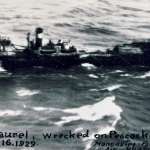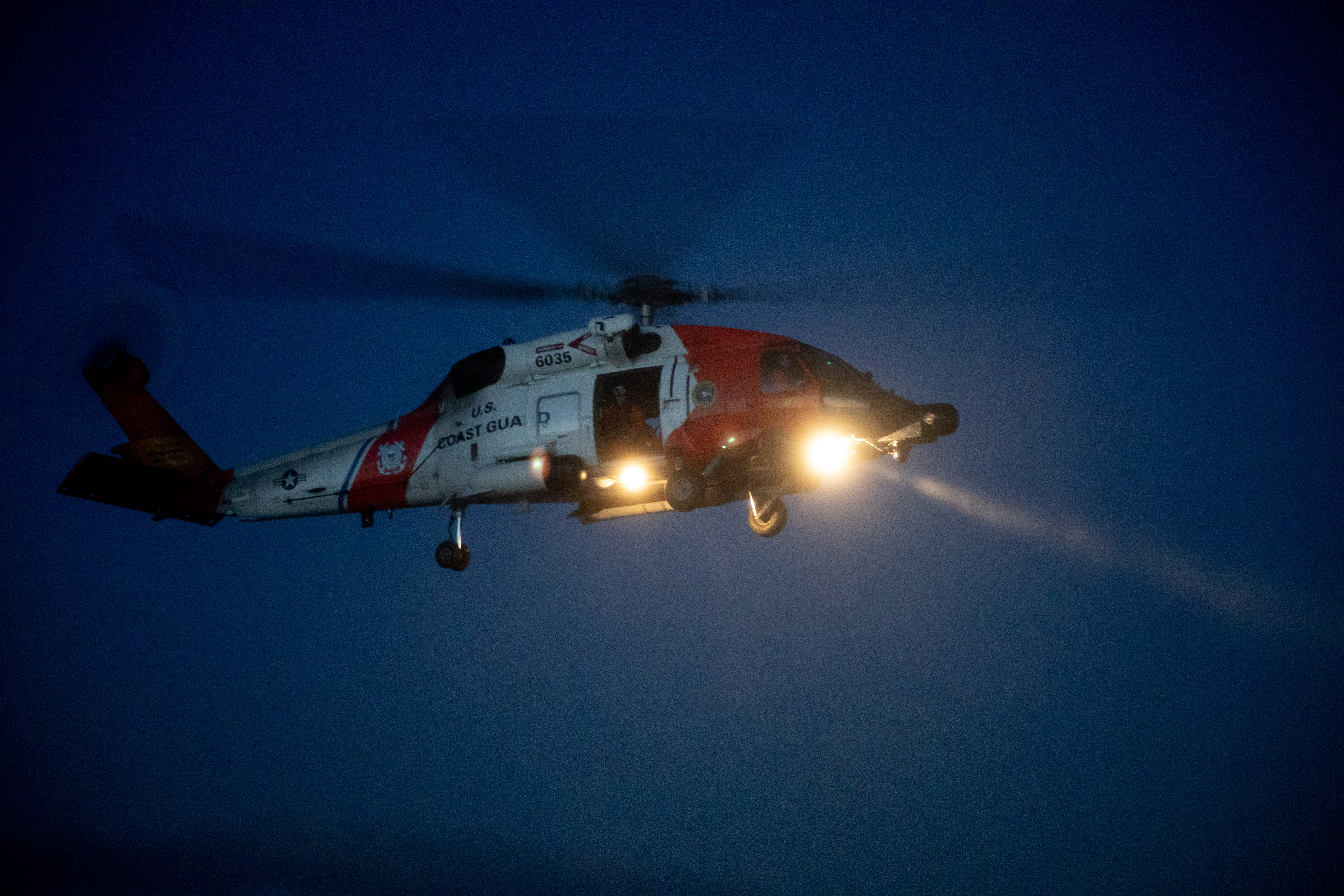A Look Back In Time: Laurel’s dramatic wreck draws gasps
Published 7:15 am Tuesday, June 24, 2025



June Happenings in History
June 3, 1937 — The Duke of Windsor married Wallis Warfield Simpson in Monts, France. As King Edward VIII, he abdicated the British throne in December 1936 amid tremendous controversy to marry Simpson, an American who had been divorced. Following the wedding, the couple lived in France and had minimal contact with the British Royal family. The Duke died in Paris on May 28, 1972, and was buried near Windsor Castle in England.
June 14, 1951 — Univac 1, the world’s first commercial electronic computer, was unveiled in Philadelphia. It was installed at the Census Bureau and utilized a magnetic tape unit as a buffer memory.
June 5, 1968 — Robert F. Kennedy was shot and mortally wounded while leaving the Hotel Ambassador in Los Angeles. The shooting occurred after a celebration of Kennedy’s victory in the California presidential primary. He died at 1:44 a.m., June 6, at age 42, leaving behind his wife Ethel and 11 children, the last one born after his death.
Local Pages
Trending
June 21, 1929, North Beach Tribune: Big Schooner Laurel Wrecks on Peacock Spit; Crew Saved
“Last Saturday the Steamer Laurel a steel screw steamer registered in Lloyd’s at 4296 tons with two decks and a wireless, one of the largest lumber carriers in the trade, finished loading four million feet of Douglas fir lumber at the mills of Vancouver and Portland and dropped down the river to put to sea and head out through the Panama Canal to her destination at New York. Before she filled her tanks with fuel oil at the Standard Oil station in Portland she was reported by sailors to have a list of about 15 degrees, but this was taken out of her as the tanks were filled and the only sign of a heavy summer deck load was the rolling of the vessel as she took her course down the Columbia.
Sunday morning she passed the sleeping city of Astoria and started beyond the sands of Peacock Spit to cross the bar, but had barely gotten beyond the outer end of the Columbia jetty and into the teeth of a raging southerly gale when young John Schwartz, red haired and 18, at the wheel, discovered that it would not steer to port. Second Mate McNaught, on watch, verified the trouble and reported to Captain Louis Johnson, who standing on the bridge, was piloting his vessel out of the river.
‘We have struck the beach’
No one knows the cause of the trouble but at 2:40 a.m. the S.O.S. went out to set in motion the means of her recovery. Hardly 30 minutes more elapsed before her radio reported “we have struck the beach.”
The coast guard cutter, Red Wing, on call at Astoria was ‘out of commission’ with her rudder gear torn out for repair. The tugs Arrow and Chehuta answered the call, but could do nothing after the Laurel struck.
The big vessel bumped and banged on the sands just north of the end of the North Jetty until 7 a.m. when she broke in two at the bridge about 100 feet back of the bow. The forward piece was held by two anchors and the after part was carried farther inshore and rested several hundred feet away with the heavy machinery and boiler holding the middle portion of the vessel, which was now the forward part of the wreck hard aground while the stern pointed shoreward and swung heavily to and fro with the swells. The crew of 32 men were all aft when the vessel broke and none was lost save Russel Smith, a young man who was working his way to New York. He was carried overboard by a huge comber that broke over the bridge. The wreck was perhaps half a mile north of the end of the jetty and not far from where the Rosecrans went down in 1913 with the loss of 30 men.
Enormous wreckage
The Point Adams crew responded to the call but were delayed…. Captain Lee Woodworth and his men made it to the wreck about 9 a.m. and got close to the stranded vessel but were unable to save the crew on account of the enormous wreckage and timbers in the water that made it sure destruction for men and boat.
They put back into the river at about the same time as the Cape Disappointment crew under Captain Leslie Barnett came in and the two crews joined in action for the remainder of the day with headquarters at the Canby station. There was nothing for them to do but await the clearing of the timbers about the doomed vessel by the action of the tide and wind and in the meantime they worked steadily to help, if possible from the beach.
At noon they left the station and took their gear and cannon on a cart for the three-mile hike across the sands to the beach at the wreck. They set up their land apparatus and took one shot which demonstrated well that the distance was far too great as the like did not carry more than half way. They therefore abandoned the idea of taking the crew off by a line and breechbuoy and wearily trudged back to the station….
Volunteers
Trending
In desperation, Captain Barnett of the Cape Coast Guard called for volunteers to replace some of his men worn out with the night at sea and a day of weary effort.
His plan was to man the power boats again and make a daring attempt at rescue from the sea before the night with its dread forebodings should close down upon them. Mike Johnson and Buck Graham were not only waiting, they were eager for the call. True men of the sea, they had served their time as coast guard men and knew the ropes. Now as Baker’s Bay fishermen they upheld the tradition of the fishing community at the mouth of the great river and stepped up in time of peril.
A crew for the Cape Disappointment boat was got together, consisting of Captain Barnett, Johnson, Graham and two men of the Cape crew, Flake and Headman, who were anxious to have a try at the rescue in spite of their exhaustion. These five men manned the Cape boat and Captain Woodworth and his crew manned the Point Adams boat.
They left Fort Canby and made the run for the shipwreck out past the end of the North Jetty and circled around to the northward of the hulk of the Laurel standing out to sea until they got into position to approach against the gale.
Onlookers gasp
Again and again their boats were out of sight for long intervals as they were down behind large combers, then they would suddenly appear against the storm swept horizon and the men and women on the beach would gasp as their prows stuck straight up from the side of some huge wave to quickly reverse and disappear with the stern only showing as the boat apparently dove straight downward into the sea from the top of the receding swell….
The boats with their intrepid mariners battled their way to a precarious position directly shoreward from the ship and soon lifebuoys were cast off from the stern by the ship crew, which had assembled to a man at the rear rail. The lifebuoys carried the lines and were picked up by the coast guard boats and made fast after which the sailors immediately began to slide down into the sea and cling to the line, were carried to the boat and possible safety….
Man after man was seen to slide down the rope, and suddenly their chance to help came to those on the beach. One of the boats was swept shoreward farther than usual and soon from its prow was seen a man waving his hat as a signal. It was answered from the beach and then it was seen that the boat was drifting shoreward out of commission with a dead engine. Nearer and nearer it came and as it approached was carried northward along the beach so that those on shore had to run to be on hand when she struck.
A hundred men were in the water hip deep when a lad jumped from the lifeboat with a line. He was dragged ashore and the line was seized and ran to shore to help keep the boat righted and prevent her from swinging in broadside With so many to help the work was quickly done….
The boat contained the Point Adams crew and six men rescued from the Laurel… Darkness was coming in, but the Cape Disappointment boat could be distinguished out at the rear of the wreck working away in the surf for the rest of the men. The lifeboat was finally seen to swing northward and there was argument as to whether or not it was running or drifting until it was settled by the red flare of distress sent out as a signal for help. It was then realized that the Cape boat and its heavy load of rescued sailors was in an angry sea at night and with an engine out of commission.
Watch was kept from the beach until a late hour when the lights of the Coast Guard cutter Red Wind were seen to approach from out of the river and it was realized that she had the lifeboat in tow…. The Red Wing took the rescued sailors aboard and proceeded with the power boat in tow into the mouth of the river….
On Monday, with the Point Adams boat on the beach and the Cape Disappointment boat out of commission the Willapa Harbor crew and boat was summoned from North Cove and the veteran, Captain Winbeck came over to effect the rescue of the remaining seven men aboard… Captain Johnson replied ‘I am going to stay aboard.’ He was rescued finally on Wednesday morning by the Cape Disappointment boat who found him ready and willing to come.












